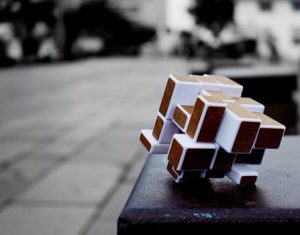The Role of Cultural Heritage in Fashion
The world of fashion is ever-evolving and constantly influenced by various factors, including cultural heritage. From traditional clothing to modern day fashion, cultural heritage has played a significant role in shaping the industry and inspiring trends. In recent years, there has been a growing focus on incorporating cultural heritage into fashion, not only as a means of paying homage to the past but also as a way of preserving and celebrating diversity. In this article, we will delve into the role of cultural heritage in fashion and how it has impacted the industry in a meaningful way.
The Evolution of Cultural Heritage in Fashion
Cultural heritage refers to the tangible and intangible aspects of a culture that are passed down from generation to generation. It encompasses a wide range of elements such as dress, customs, traditions, beliefs, and practices. When it comes to fashion, cultural heritage has always been a source of inspiration for designers. In the past, traditional clothing and textiles were mainly confined to their respective cultures and were not widely incorporated into mainstream fashion.
However, with the rise of globalization and the breaking down of cultural barriers, there has been a noticeable shift in the fashion industry. Designers are now drawing inspiration from various cultures around the world, resulting in a fusion of traditional and contemporary elements in fashion. This fusion has not only created a diverse range of styles but also allowed for the preservation and celebration of cultural heritage in a new and modern way.
The Influence of Cultural Heritage on Fashion Trends
Cultural heritage has had a significant impact on fashion trends, both past and present. Traditional clothing from different cultures has made its way onto the runways and into the wardrobes of many, making it accessible to a wider audience. This has also led to the rise of cultural appropriation and the need for designers to be more mindful and respectful of the cultural origins of their designs.
Moreover, the use of traditional prints, fabrics, and techniques in modern fashion has also sparked a trend of incorporating sustainable and ethical practices into the industry. Designers are now working closely with artisans from different cultures, not only to incorporate their skills and techniques into their designs but also to provide them with fair wages and working conditions.
Cultural Heritage as a Means of Self-expression
Fashion has always been used as a tool for self-expression, and cultural heritage plays a vital role in this aspect. In today’s society, where cultural identity and diversity are celebrated and valued, incorporating elements of one’s own cultural heritage into fashion has become a way for individuals to express their identity and beliefs. This has resulted in a more inclusive and representative fashion industry that caters to various cultural backgrounds.
Furthermore, the effects of cultural heritage in fashion extend beyond just the clothes we wear. It has inspired a movement towards body positivity by embracing diverse body types and sizes in fashion. Traditional clothing from different cultures often celebrates and highlights the beauty of natural body shapes and sizes, setting a positive example for the industry.
The Role of Cultural Heritage in the Future of Fashion
Cultural heritage will continue to play a significant role in the fashion industry in the future. The growing trend of embracing diversity and inclusivity in fashion has paved the way for designers to explore and incorporate elements of different cultures into their designs. This not only allows for a more diverse and interesting range of fashion but also promotes cultural awareness and appreciation.
Moreover, the use of traditional and sustainable practices in fashion is expected to grow, leading to a more environmentally and socially conscious industry. As more consumers become aware of the impact of fast fashion on the environment and the working conditions of garment workers, the use of cultural heritage in fashion can provide a solution to these issues by promoting ethical and sustainable practices.
In Conclusion
Cultural heritage has always been an integral part of fashion, and its influence is only growing. The incorporation of traditional clothing, fabrics, and techniques from different cultures into mainstream fashion not only adds diversity and creativity but also allows for the preservation and celebration of cultural heritage. As we move towards a more inclusive and sustainable fashion industry, cultural heritage will continue to play a vital role in shaping its future.











